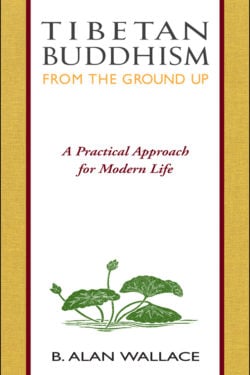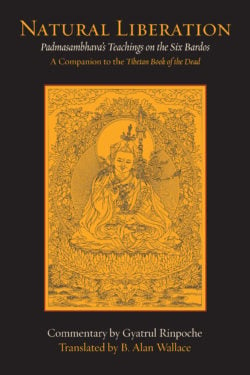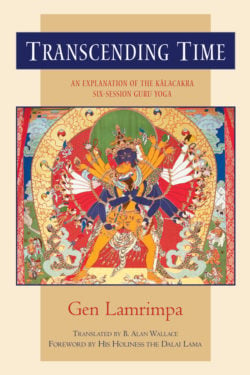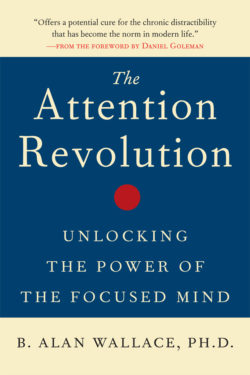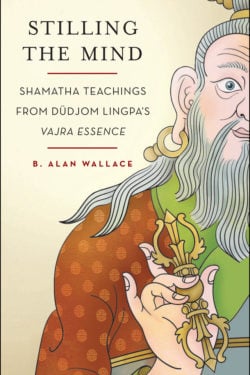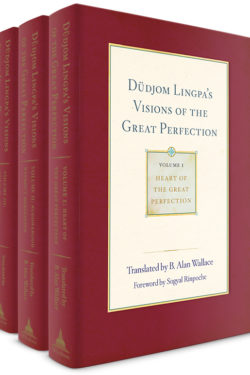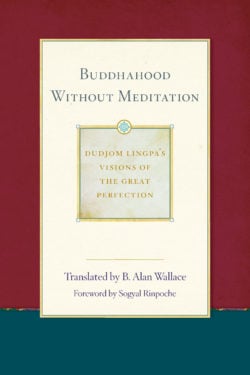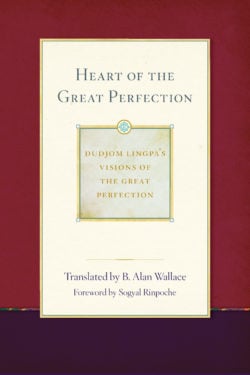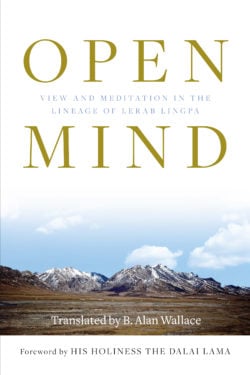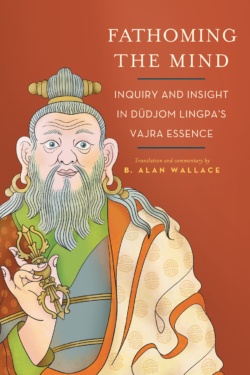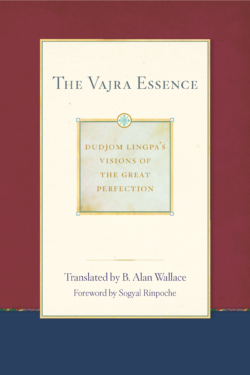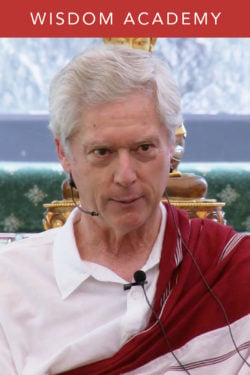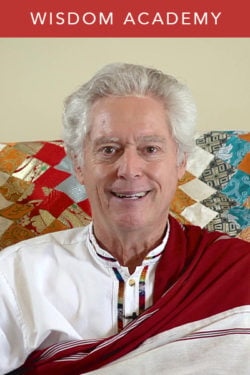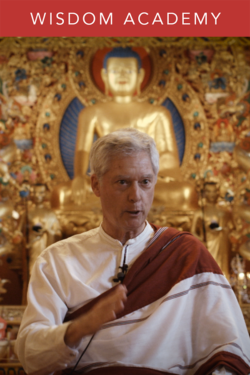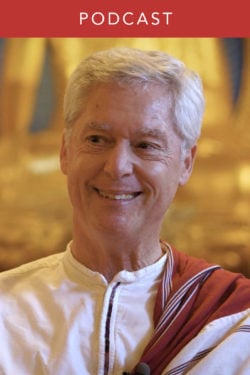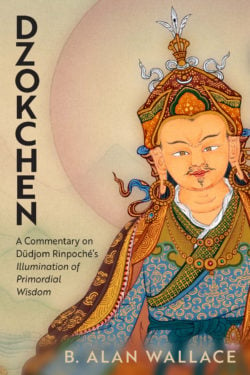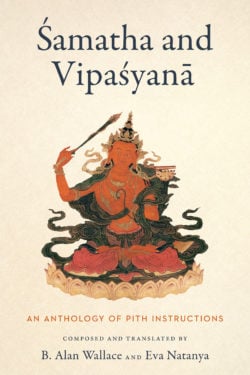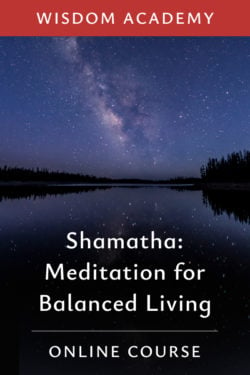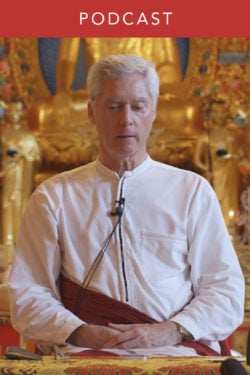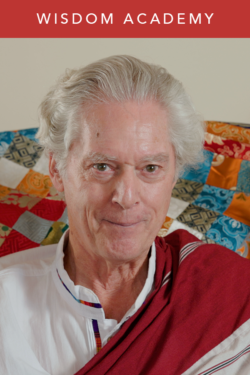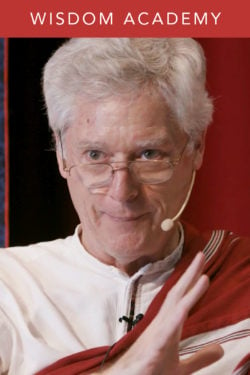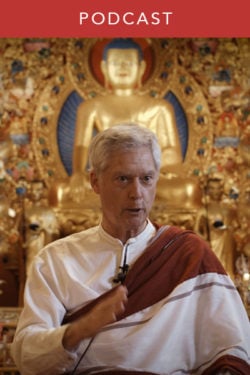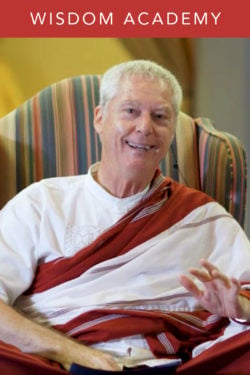B. Alan Wallace

B. Alan Wallace is president of the Santa Barbara Institute for Consciousness Studies. He trained for many years as a monk in Buddhist monasteries in India and Switzerland. He has taught Buddhist theory and practice in Europe and America since 1976 and has served as interpreter for numerous Tibetan scholars and contemplatives, including H. H. the Dalai Lama. After graduating summa cum laude from Amherst College, where he studied physics and the philosophy of science, he earned his MA and PhD in religious studies at Stanford University. He has edited, translated, authored, and contributed to more than forty books on Tibetan Buddhism, medicine, language, and culture, and the interface between science and religion.
Alan is also the founder of the Center for Contemplative Research (CCR), which now has retreat center locations in Crestone, Colorado, and in Castellina Marittima, Italy. A new center is also being established in New Zealand. The CCR is dedicated to researching the role and methods of the ancient contemplative practices of Shamatha and Vipashyana, and their involvement in mental health and wellbeing, as well as their role in fathoming the nature and origins of human consciousness.
The CCR vision builds on the results of the Shamatha Project. It is guided by a Scientific Advisory Board that includes the Nobel Prize-winning physicist and biologist Steven Chu (Stanford University), neuroscientist and clinical psychologist David Presti (UC Berkeley), theoretical physicist Marcelo Gleiser (Director of the Institute for Cross-Disciplinary Engagement at Dartmouth College), and philosopher Michel Bitbol (Director of Research at the Centre National de la Recherche Scientifique). Cognitive scientists at the University of Pisa, the University of Trent, and the Scuola Superiore Sant’Anna in Pisa are committed to conducting research in collaboration with the CCR.
For an introduction, listen to The Nature of Reality: A Dialogue Between a Buddhist Scholar and a Theoretical Physicist. In this public dialogue, Alan Wallace and Sean Carroll, a world-renowned theoretical physicist and best-selling author, discussed the nature of reality from spiritual and scientific viewpoints.
Books, Courses & Podcasts
Tibetan Buddhism from the Ground Up
As long as our minds are dominated by the conditions of the external world, we are bound to remain in a state of dissatisfaction, always vulnerable to grief and fear. How then can we develop an inner sense of well-being and redefine our relationship to a world that seems unavoidably painful and unkind?
Many have found a practical answer to that question in the teachings of Tibetan Buddhism. Here at last is an organized overview of these teachings, beginning with the basic themes of the sutras—the general discourses of the Buddha—and continuing through the esoteric concepts and advanced practices of Tantra. Unlike other introductions to Tibetan Buddhism, this accessible, enjoyable work doesn’t stop with theory and history, but relates timeless spiritual principles to the pressing issues of modern life, both in terms of our daily experience and our uniquely Western world view.
This fascinating, highly readable book asks neither unquestioning faith nor blind obedience to abstract concepts or religious beliefs. Rather, it challenges us to question and investigate life’s issues for ourselves in the light of an ancient and effective approach to the sufferings and joys of the human condition.
Natural Liberation
Printed on demand. This book will be printed especially for you and will ship from a separate warehouse.
In life and in death, in meditation and in sleep, every transitional stage of consciousness, or bardo, provides an opportunity to overcome limitations, frustrations, and fears. The profound teachings in this book provide the understanding and instruction necessary to turn every phase of life into an opportunity for uncontrived, natural liberation.
Like the Tibetan Book of the Dead, Natural Liberation is a terma, a “hidden treasure” attributed to the eighth-century master Padmasambhava. Gyatrul Rinpoche’s lucid commentary accompanies the text, illuminating the path of awakening to the point of full enlightenment. Natural Liberation is an essential contribution to the library of both scholars and practitioners of Tibetan Buddhism.
Transcending Time
Inspired by years of scholarly training and decades of solitary retreat, Tibetan monk Gen Lamrimpa offers a concise overview of all phases of the Kalachakra practice: the preliminaries, the initiation, and finally, the stages of generation and completion. With remarkable clarity, he makes the Six-Session Guruyoga practice accessible to all practitioners, and deepens our understanding and appreciation of this sublime teaching of the Buddha.
Gen Lamrimpa begins this eminently practical explanation by emphasizing the importance of a compassionate motivation for spiritual practice. He then explores the nature of suffering and the cycle of existence that traps all living beings, and concludes with a detailed account of the Six-Phase Yoga, which is meant to be recited and contemplated three times during the day and three times at night. Alan Wallace’s introduction illuminates both Kalachakra’s rich history and Gen Lamrimpa’s unique contribution to our understanding.
This book provides a clear explanation of Kalachakra as set forth within the context of the Six-Session Guruyoga, a daily meditation practice for initiates. Transcending Time presents all phases of Kalachakra practice—the preliminaries, the initiation, and finally, the stages of generation and completion.
The Attention Revolution
As featured in Psychology Today.
Meditation offers, in addition to its many other benefits, a method for achieving previously inconceivable levels of concentration. Author B. Alan Wallace has nearly thirty years’ practice in attention-enhancing meditation, including a retreat he performed under the guidance of the Dalai Lama. An active participant in the much-publicized dialogues between Buddhists and scientists, Alan is uniquely qualified to speak intelligently to both camps, and The Attention Revolution is the definitive presentation of his knowledge.
Beginning by pointing out the ill effects that follow from our inability to focus, Alan moves on to explore a systematic path of meditation to deepen our capacity for deep concentration. The result is an exciting, rewarding “expedition of the mind,” tracing everything from the confusion at the bottom of the trail to the extraordinary clarity and power that come with making it to the top. Along the way, the author also provides interludes and complementary practices for cultivating love, compassion, and clarity in our waking and dreaming lives.
Attention is the key that makes personal change possible, and the good news is that it can be trained. This book shows how.
Stilling the Mind
In his previous book, The Attention Revolution, bestselling author B. Alan Wallace guided readers through the stages of shamatha, a meditation for focusing the mind. In Stilling the Mind, he uses the wisdom of Dzogchen—the highest of all the meditation traditions—to open up the shamatha practice into a space of vast freedom. Here, Alan introduces us to Dudjom Lingpa’s Vajra Essence, one of the most cherished works of the Nyingma school from which Dzogchen stems. With his trademark enthusiasm and keen intelligence, Alan makes obscure concepts intelligible to contemporary readers and allows us to glimpse the profound realizations of a great nineteenth-century spiritual adept.
Read Dudjom Lingpa’s biography at the Treasury of Lives.
Dudjom Lingpa’s Visions of the Great Perfection
Runner-up for 2017 Shantarakshita Award for Excellence in Translation from the Tsadra Foundation
From the preeminent Tibetan scholar B. Alan Wallace comes the much-anticipated Dudjom Lingpa’s Visions of the Great Perfection.
This limited-edition set includes elegant clothbound editions of all three volumes, beautifully presented in a slipcase.
Düdjom Lingpa (1835–1904) was one of the foremost tantric masters of nineteenth-century Tibet. This new series includes Düdjom Lingpa’s five visionary teachings on the Great Perfection (Dzogchen), the pinnacle of practice in Tibet’s oldest Buddhist school, along with three essential commentaries. The teachings in this series have inspired generations of Tibetans.
Volume 1, Heart of the Great Perfection, contains four works, beginning with The Sharp Vajra of Conscious Awareness Tantra, considered the root distillation of Düdjom Lingpa’s wisdom. Unpacking these quintessential verses is the Essence of Clear Meaning, a definitive commentary based on Düdjom Lingpa’s oral teachings recorded by his disciple Pema Tashi. In The Foolish Dharma of an Idiot Clothed in Mud and Feathers, Düdjom Lingpa narrates the essential Dharma teachings from the perspective of an old man rejecting superficial appearances. Finally, The Enlightened View of Samantabhadra is a masterful exposition of the Great Perfection revealed as a dialogue between wisdom beings who bestow a treasury of pith instructions and specific advice for practitioners.
Volume 2, Buddhahood without Meditation, includes Düdjom Lingpa’s most widely taught work, Buddhism Without Meditation, and two complementary works by his charismatic female disciple, Sera Khandro, who is accomplished and well loved in her own right. Her Garland for the Delight of the Fortunate spells out the implications of the root text’s highly condensed verses.
Volume 3, The Vajra Essence, contains Düdjom Lingpa’s magisterial Vajra Essence, his most extended meditation on the path of Great Perfection, in many senses a commentary on all his other Dzogchen works.
Buddhahood Without Meditation
The practice of Dzogchen, the Great Perfection, is the pinnacle of the nine vehicles of practice taught in the Nyingma school of Tibetan Buddhism. The highly influential mystic Düdjom Lingpa (1835–1904) and his disciple Sera Khandro (1892–1940), the most prolific female writer in Tibetan history, here illuminate the methods to discover our own primordial purity and abide in uncontrived awareness.
Buddhahood Without Meditation: This is Düdjom Lingpa’s most widely taught visionary text. In it wisdom beings and historical figures in the Great Perfection lineage emphasize the view of cutting through (trekchö) to the original purity of pristine awareness via the four special samayas, or pledges, of the Great Perfection: nonexistence, oneness, uniform pervasiveness, and spontaneous actualization. At each stage of his spiritual progress, Düdjom Lingpa’s doubts are dispelled and his realizations enhanced by pithy advice.
The Fine Path to Liberation: Sera Khandro establishes the necessary motivation and conduct for receiving teachings such as Buddhahood Without Meditation. This sublime Dharma is to be seen in the context of the five perfections of the sambhogakaya: the teacher, place, time, disciples, and Dharma are fully perfected and must not be reified as ordinary.
Garland for the Delight of the Fortunate: Sera Khandro fills in the gaps of Buddhahood Without Meditation, explaining the metaphors, and spelling out the implications of the root text’s highly condensed verses. This is an essential key for unlocking Düdjom Lingpa’s profound wisdom.
Heart of the Great Perfection
Düdjom Lingpa (1835–1904) was one of the foremost tantric masters of his time. This new series includes his visionary teachings on the Great Perfection (Dzogchen), the pinnacle of practice in Tibet’s oldest Buddhist school. Volume 1 contains four works explaining the view and practice of the Great Perfection, the signature style of meditation of the Nyingma school of Tibetan Buddhism:
The Sharp Vajra of Conscious Awareness Tantra: This work is considered the root distillation of Düdjom Lingpa’s wisdom.
Essence of Clear Meaning: This definitive commentary, which unpacks the quintessential verses of The Sharp Vajra, is based on Düdjom Lingpa’s oral teachings recorded by his disciple Pema Tashi.
The Foolish Dharma of an Idiot Clothed in Mud and Feathers: Düdjom Lingpa narrates the essential Dharma teachings from the perspective of an old man rejecting superficial appearances.
The Enlightened View of Samantabhadra: A masterful exposition of the Great Perfection is revealed as a dialogue between wisdom beings who bestow a treasury of pith instructions and specific advice for practitioners.
While the teachings in this series have inspired generations of Tibetans, few have been published in translation—until now.
Open Mind
Lerab Lingpa (1856–1926), also known as Tertön Sogyal, was one of the great Dzogchen (Great Perfection) masters of the nineteenth and early-twentieth centuries and a close confidant and guru of the Thirteenth Dalai Lama. This volume contains translations by B. Alan Wallace of two works that are representative of the lineage of this great “treasure revealer,” or tertön.
The first work, composed by Lerab Lingpa himself, is The Vital Essence of Primordial Consciousness. It presents pith instructions on all the stages of the Great Perfection, which is the highest form of meditation and practice in the Nyingma school of Tibetan Buddhism. In this practice, the meditator comes to see directly the ultimate nature of consciousness itself. The work guides the reader from the common preliminaries through to the highest practices of the Great Perfection—the direct crossing over and the achievement of the rainbow body.
The second work, Selected Essays on Old and New Views of the Secret Mantrayana, is a collection of seven essays by two of Lerab Lingpa’s close disciples, Dharmasara and Jé Tsultrim Zangpo. Dharmasara wrote six of the essays, providing detailed, erudite explanations of the compatibility among the theories and practices of Great Perfection, Mahamudra (a parallel practice tradition found in other schools), and the Madhyamaka view, especially as these are interpreted by the Indian pandita Candrakirti, the Nyingma master Longchen Rabjam, and Tsongkhapa, founder of the Geluk school of Tibetan Buddhism. The one essay by Jé Tsultrim Zangpo (a.k.a. Tulku Tsullo), “An Ornament of the Enlightened View of Samantabhadra,” contextualizes the Great Perfection within the broader framework of Mahayana and Vajrayana Buddhism and then elucidates all the stages of practice of the Great Perfection, unifying the profound path of cutting through and the vast path of the spontaneous actualization of the direct crossing over.
This volume will be of great interest for all those interested in the theory and practice of the Great Perfection and the way it relates to the wisdom teachings of Tsongkhapa and others in the new translation schools of Tibetan Buddhism.
Fathoming the Mind
Fathoming the Mind continues the commentary to Düdjom Lingpa’s Vajra Essence that appeared in Stilling the Mind, daringly contextualizing Buddhist teachings on the Great Perfection as a revolutionary challenge to many contemporary beliefs. This companion volume stems from an oral commentary that B. Alan Wallace gave to the next section of the Vajra Essence, on the cultivation of contemplative insight, or vipaśyanā, that fathoms the nature of existence as a whole. Düdjom Lingpa’s revelation consists of a fascinating dialogue that occurred during his pure vision of Samantabhadra, personification of primordial consciousness, manifesting as the youthful form of the Lake-born Vajra emanation of Padmasambhava, in dialogue with an entourage of bodhisattvas symbolizing various aspects of Düdjom Lingpa’s mind.
In continuing to reflect on Düdjom Lingpa’s writings and their relevance to the modern world, Alan was inspired to elaborate extensively on his original commentary. This book includes introductory essays and an afterword, which explore how the insights discussed here might contribute to yet a new “contemplative revolution,” one that would be as far-reaching in its implications as the scientific revolutions triggered by the discoveries of Galileo, Darwin, and Einstein.
The Vajra Essence
Düdjom Lingpa (1835–1904) was one of the foremost tantric masters of nineteenth-century Tibet, and his powerful voice resonates strongly among Buddhist practitioners today. The Vajra Essence is Düdjom Lingpa’s most extended meditation on the path of Great Perfection, in many senses a commentary on all his other Dzogchen works. Dzogchen, the pinnacle of practice in the Nyingma school, is a radical revelation of the pure nature of consciousness that is delivered from master to disciple and perfected in a meditation that permeates every moment of our experience.
Revealed to Düdjom Lingpa as a visionary “treasure” text in 1862, the Vajra Essence takes the reader through seven stages of progressively deeper practice, from “taking the impure mind as the path” up to the practice of “direct crossing over” (tögal). The longest of Düdjom Lingpa’s five visionary works on Dzogchen, readers will find this a rich and masterful evocation of the enlightened experience. This is the first translation of this seminal work in any Western language, and Lama Alan Wallace, with his forty-five-plus years of extensive learning and deep meditative experience, is one of the most accomplished translators of Tibetan texts into English.
Introduction to Dzogchen
In this online course led by B. Alan Wallace, you’ll be introduced to the view, meditation, and way of life of Dzogchen—the Great Perfection tradition of Tibetan Buddhism. Wallace takes us through a remarkable text by nineteenth-century master Düdjom Lingpa, The Foolish Dharma of an Idiot Clothed in Mud and Feathers, and guides us in meditations that help us begin to discover the Great Perfection for ourselves. Additional selected readings, quizzes, and the opportunity to discuss this material with an international community of learners will augment your understanding and help you integrate this profound path into your daily life.
Cultivating Emotional Balance
In this program inspired by His Holiness the Dalai Lama and developed with eminent psychologist Dr. Paul Ekman, Tibetan Buddhist teacher B. Alan Wallace and second-generation emotion researcher Dr. Eve Ekman invite you to discover greater happiness and well-being. Using insights and methods drawn from both Western psychology and Buddhist contemplative practices, we investigate our inner life in order to improve our outer life. Designed using evidence-based, practical, and secular strategies to benefit people from all walks of life, this course helps us explicitly seek to cultivate wise aspirations and values, learn how to develop our attention skills, and then begin to cultivate emotional balance—the emotional intelligence that can lead to genuine happiness and a fulfilling life.
A Scientific Investigation of the Mind (The Dharma of Well-Being, Part 1)
Drawing on insights and methods from both the Buddhist tradition and Western psychology and philosophy, B. Alan Wallace invites you to investigate the causes of both genuine unhappiness and genuine well-being. You’ll start by looking into what genuine well-being is before delving into what it is not as Alan explores the causes of suffering, mental afflictions, and unhappiness, along with the internal factors that often prevent us from being truly happy. He then turns to the causes of genuine happiness and offers skills, practices, and insights that will help you achieve genuine happiness.
We hope you’ll join us and take the next step on your path toward developing genuine well-being in your life.
The Four Immeasurables, Part 1
In this course, under the expert guidance of B. Alan Wallace, you’ll explore the practice of cultivating the Four Immeasurables, the Four Greats, and bodhicitta, including from the perspective of vajrayana, and specifically from pure view and divine pride, as Avalokitesvara. Part I covers loving-kindness and compassion.
Lama Alan Wallace: Dzogchen and the Science of Mind
In this episode of the Wisdom Podcast, recorded live as a part of the Wisdom Academy course Introduction to Dzogchen, we hear an interview, lecture, and Q&A with Lama Alan Wallace, renowned Tibetan Buddhist scholar and teacher. We hear how Lama Alan’s spiritual path began and what drew him to dzogchen practice in particular. He describes his life in college and how he dropped out to study meditation intensively. He traveled to India where he met many great teachers, including the Dalai Lama, who became his root guru. He tells us about the years he spent in intensive meditation retreat and explains why he feels that he was “born at age 20.” After spending time in India he returned to college at Amherst and began studying physics under the guidance of Arthur Zajonc. Lama Alan also tells us what drew him to shamatha practice and relays a teaching on how shamatha supports the development of bodhicitta. He tells of the pivotal experience he had while on a retreat with S. N. Goenka and reflects on why shamatha is so important across Buddhist traditions. Lama Alan then tells the story of how the Buddha slipped into a state of mindfulness when he was only a child and comments on what this meant. Lama Alan then gives an illuminating talk about dzogchen practice, touching on the conversation currently happening between science and Buddhism. He also teaches on the essential nature of the mind and how to truly and wisely observe the mind and naturally discover awareness. Finally, the Q&A with the live audience provides even more rich, eye-opening, and immediately applicable teachings to help you along the Buddhist path.
Dzokchen
Dudjom Rinpoche’s classic meditation manual on realizing the Great Perfection, presented and explained by Lama B. Alan Wallace.
In the concise yet comprehensive practice manual entitled Illumination of Primordial Consciousness, the great twentieth-century Tibetan Nyingma master Dudjom Rinpoche lays out a sequential path to spiritual freedom according to the teachings of the Great Perfection (Dzokchen): First, we refine our awareness by training in meditative quiescence (shamatha) and then proceed to the practices of insight meditation (vipashyana), by which our mind’s basic nature of luminosity and emptiness is revealed. Then, having recognized that the ordinary, deluded mind is actually without any intrinsic essence, we are primed to cut through this conditioned mind into unborn, timeless pristine awareness, which has never been contaminated by mental afflictions or other obscurations. Finally, we realize that our own awareness has never been other than the dharmakāya, the mind of a buddha, and perfect enlightenment is realized spontaneously and effortlessly.
Beloved teacher and renowned scholar Lama B. Alan Wallace guides the reader through this remarkable text, which he first translated for his teacher Gyatrul Rinpoche’s book Meditation, Transformation, and Dream Yoga. In this book, Lama shares insights gained over years of study, providing a line-by-line explanation interspersed with background teachings from revered Dzokchen scriptures written by Padmasambhava, Dudjom Lingpa, and others. Also included are a set of fifteen guided meditations given by Lama Wallace, along with links to audio tracks of Lama Wallace giving the instructions himself. Through the practices he describes, the mystery of the mind—its origin and what happens to it at death–is thus illuminated through one’s own meditative experience.
Lama Alan has provided several guided meditations to accompany this book and they can be found here.
Samatha and Vipasyana
Invaluable instructions on core meditations designed to bring about irreversible spiritual transformation.
For those who aspire to the total enlightenment of a buddha, the contemplative practices of śamatha and vipaśyanā play a crucial role from the beginning of the path to its culmination. Designed to free one first from the five obscurations that hinder the natural clarity and balance of the mind—and eventually from the ignorance that is the root of suffering—these practices, when imbued with bodhicitta, enable one to reach a pivotal stage within the Mahāyāna path of accumulation. This is the stage at which one gains irreversible, gold-like bodhicitta, after which one is assured of being a bodhisattva in all one’s future lifetimes until enlightenment.
The instructions gathered here are like a string of pearls spanning from the eleventh century to the present day. They include teachings from great Indian masters as well as renowned lamas of the past and present from the four major orders of Tibetan Buddhism, and many of the texts translated here stem from visionary teachings revealed by Mañjuśrī, Vajrapāṇi, Avalokiteśvara, and Padmasambhava. Introductions rich in biographical detail accompany each group of translated entries, providing historical context and drawing connections between complementary lineages. The concluding pith instructions from Lama Alan Wallace bring the anthology directly into the domain of contemporary practice, and a collection of links to a rich array of recorded oral teachings by eminent lamas, including His Holiness the Dalai Lama’s first teachings in the West, make this volume a treasure trove for the practitioner and scholar alike.
Shamatha: Meditation for Balanced Living
During this course you will explore in theory and practice a range of methods for developing meditative quiescence, or shamatha.
The course begins with the practice of mindfulness of breathing as taught by the Buddha, which is an especially effective approach to soothing the body and calming the discursive mind.
You will then explore an approach to shamatha that is particularly pertinent for Dzogchen practice, called “settling the mind in its natural state,” as taught by the nineteenth-century Dzogchen master Lerab Lingpa in his commentary to the Heart Essence of Vimalamitra.
Finally you will engage in the practice of “shamatha without signs” as taught by Padmasambhava in his classic terma Natural Liberation, where he explains how it relates to the realization of rigpa, or pristine awareness.
The achievement of shamatha is widely regarded in the Buddhist tradition as an indispensable foundation for the cultivation of contemplative insight (vipashyana), and this course is designed to provide students with a sufficient theoretical understanding and a basis in experience to enable them to proceed effectively toward this extraordinary state of mental and physical balance.
Lama Alan Wallace: Meditation for Balanced Living
In this special taping of the Wisdom Podcast in front of a live audience at Harvard Divinity School, renowned Tibetan Buddhist teacher Lama Alan Wallace explores with us the benefits of shamatha practice for leading a balanced life. Recorded as part of his Wisdom Academy course, Shamatha: Meditation for Balanced Living, Lama Alan shares with us the meaning of shamatha and its place among the Buddha’s meditation techniques. He relates how it is an essential practice in all schools of Buddhism, including Theravada, Mahayana, and Vajrayana, and he specifically highlights its importance in the Dzogchen tradition of Tibet.
The Four Applications of Mindfulness
In this course we investigate the nature of human identity and the possibility of freedom through the Buddha’s foundational instructions on the cultivation of vipashyana, or insight. Alan Wallace presents the four close applications of mindfulness — mindfulness on the body, feelings, the mind, and phenomena — through rich pith instruction on selections from the Pali canon, Mahayana sutras, and commentary from the Vajrayana and Dzogchen traditions. Alan’s unique presentation offers an integrative vision of the Buddhist path, and clarifies fundamental Buddhist truths such the nature of nirvana, the unique vision of the path of the arhat, as well as that of the bodhisattva. We learn that these paths share a common ultimate vision: the primordial and unborn nature of liberation. Alan offers step-by-step guidance through the four applications with clear instruction on the relationship between shamatha (calm-abiding) practice and vipashyana, making these timeless teachings applicable to daily life in the modern world.
Lama Alan Wallace: Solitude and Resilience (#118)
This episode of the Wisdom Podcast, recorded live as a Wisdom Dharma Chat, features a conversation with Lama Alan Wallace, author, scholar, president of the Santa Barbara Institute for Consciousness Studies, and Founder, President, and Director of Contemplative Training at the Center for Contemplative Research. Lama Alan has also edited, translated, written, and contributed to more than forty books on Tibetan Buddhism, medicine, language, and culture, as well as the interface between science and religion.
In this conversation, recorded in 2020 during the COVID-19 pandemic, Lama Alan gives timely teachings on the benefits of inner and outer solitude. He offers advice on how to not feel like a victim of circumstances, but instead reframe periods of involuntary solitude as opportunities to slow down, practice cultivating the mind, and reassess both personal and societal trajectories. You’ll hear about this and so much more in this truly inspiring episode
You may also like: The Joy of Solitude: An Excerpt from Focused and Fearless by Shaila Catherine

Remember to subscribe to the Wisdom Podcast for more great conversations on Buddhism, meditation, and mindfulness. And please give us a 5-star rating in Apple Podcasts if you enjoy our show—it’s a great support to us and it helps other people find the podcast. Thank you!

